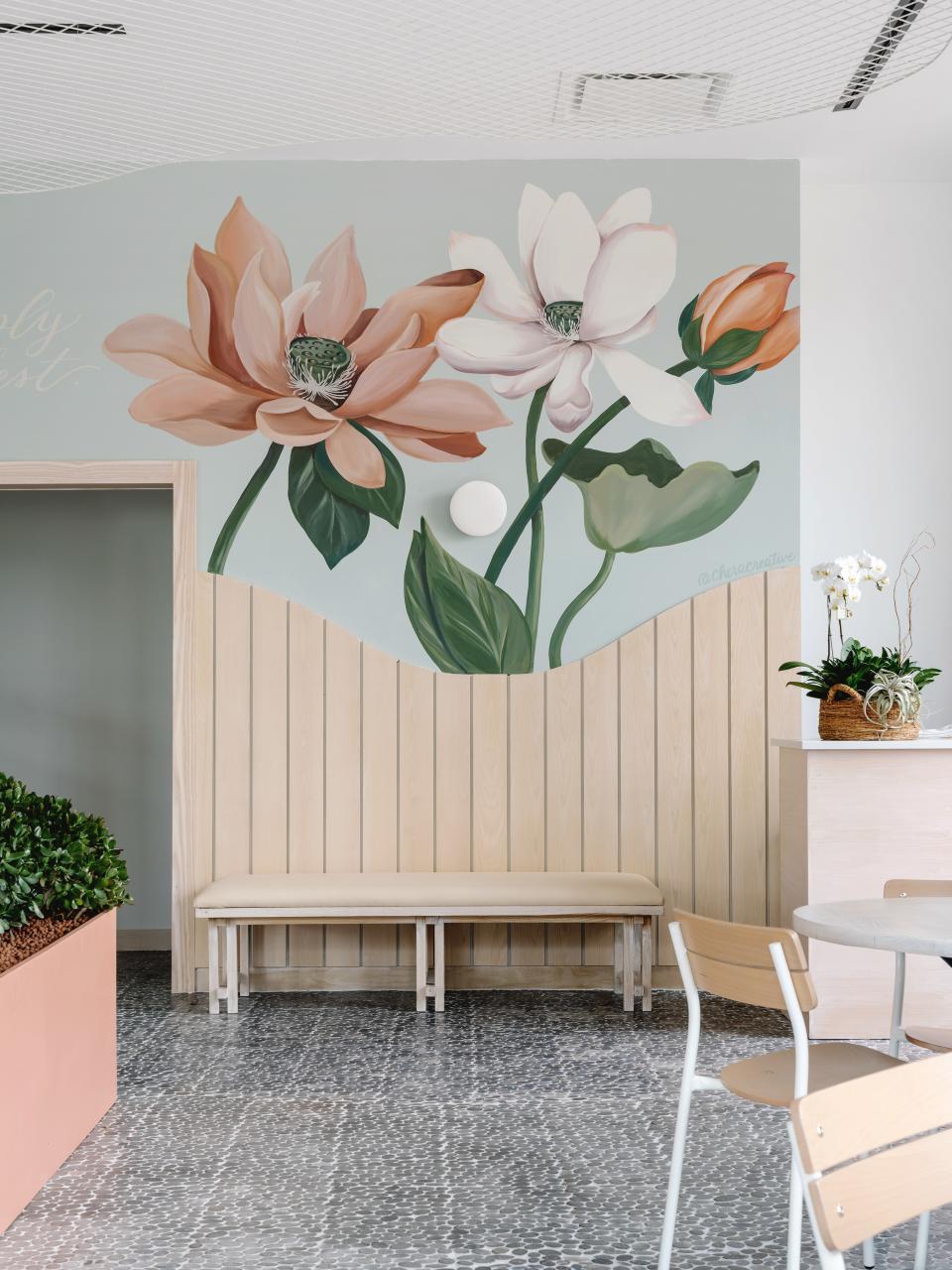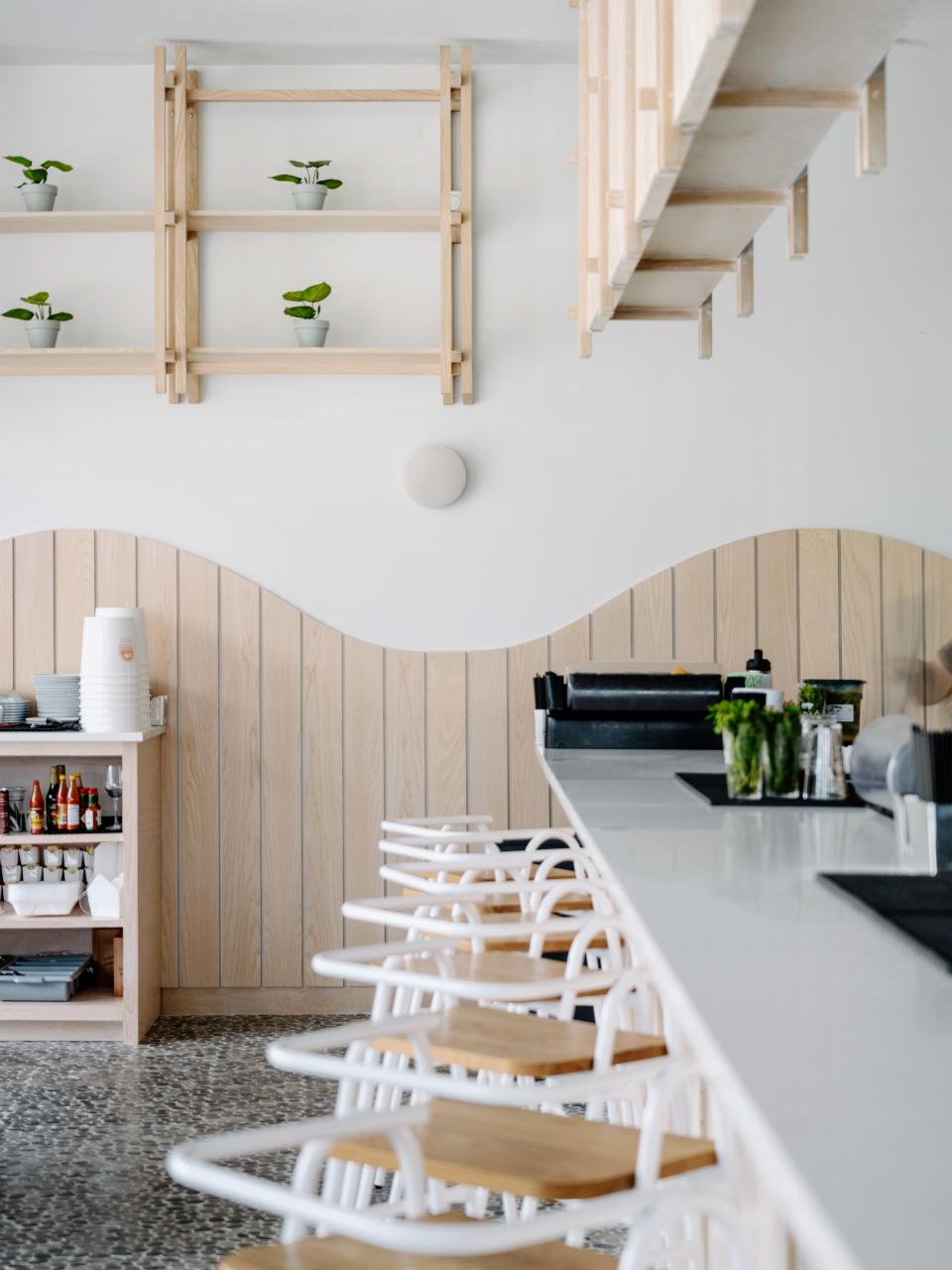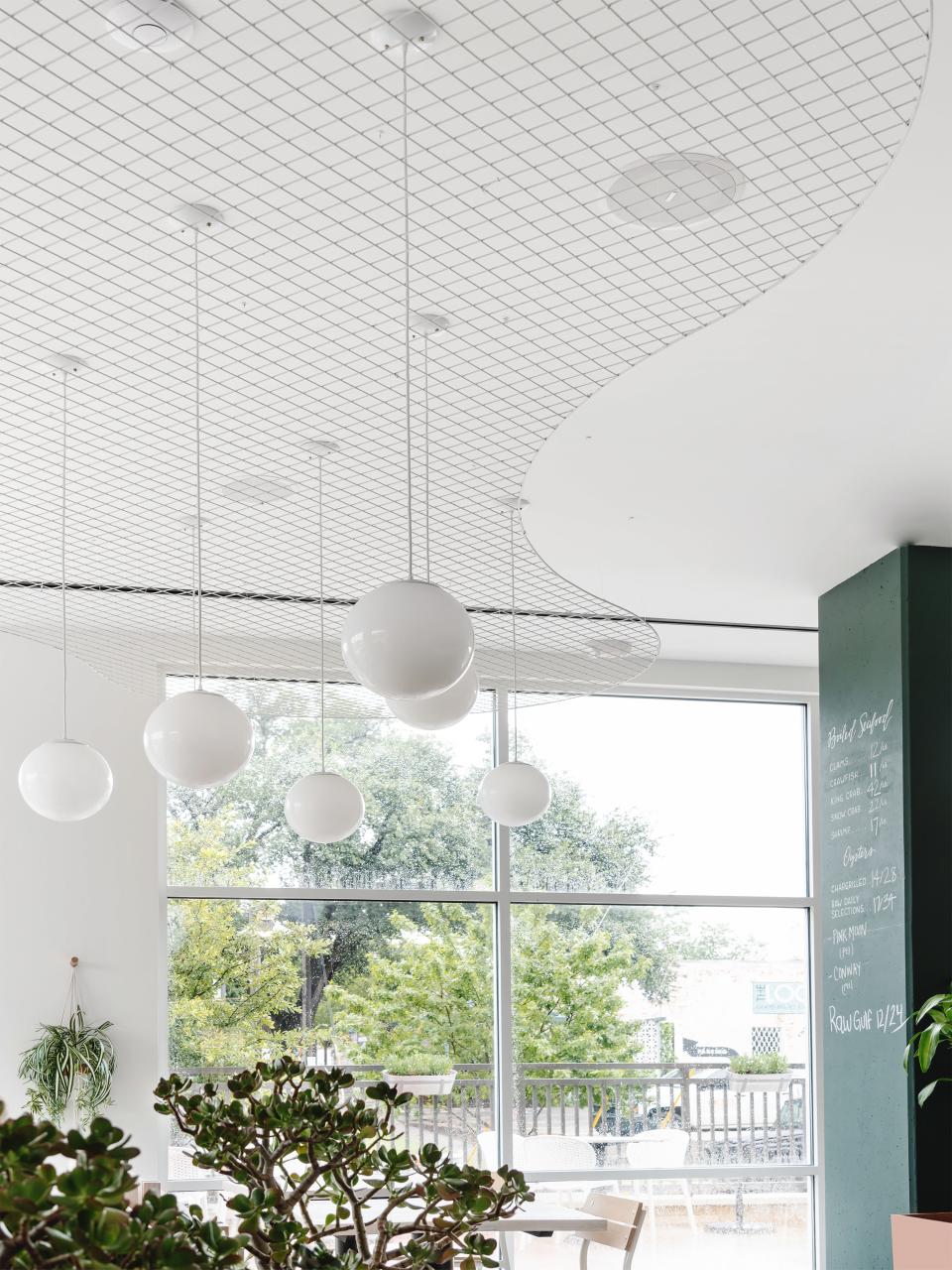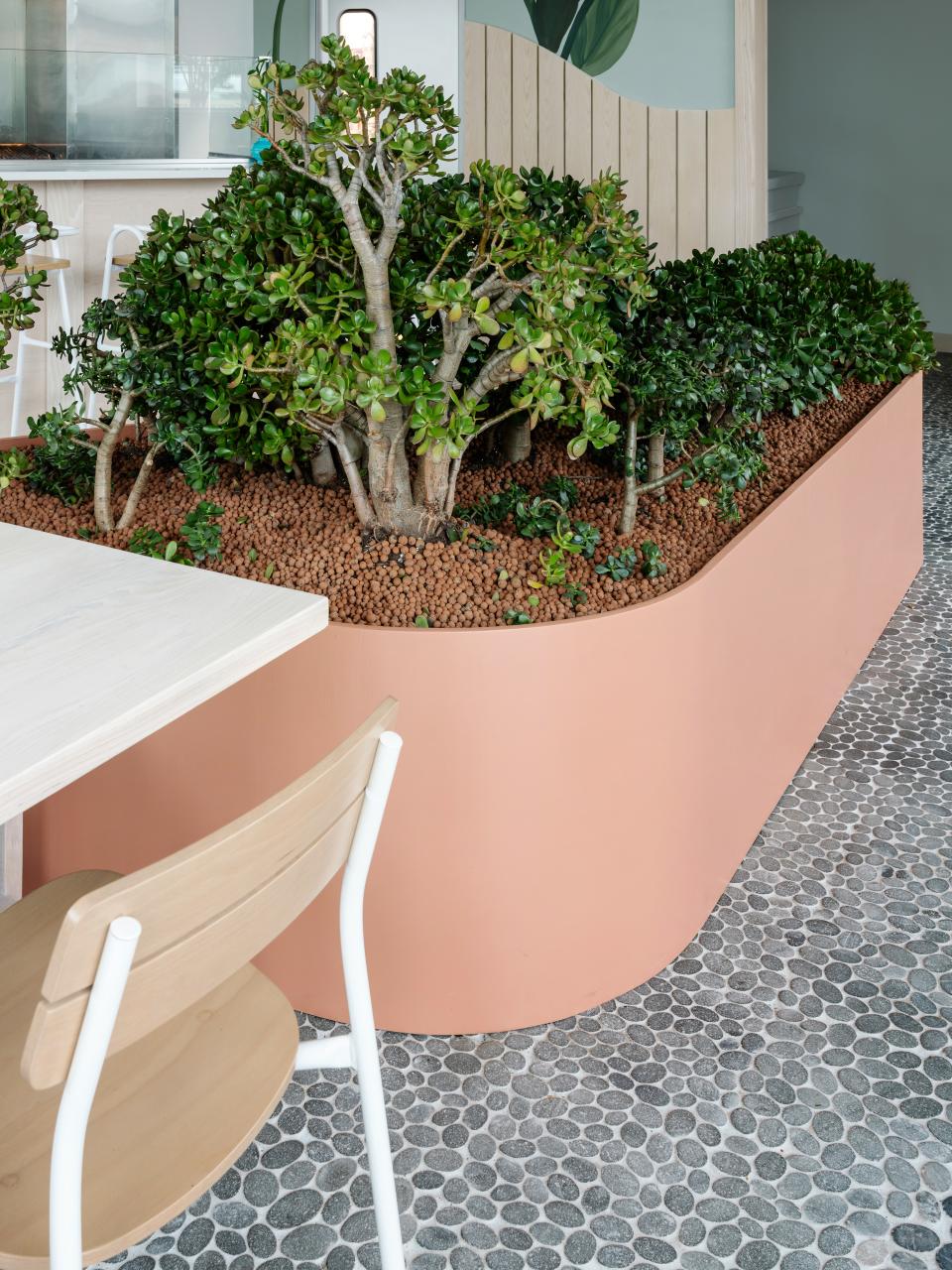We’re Loving the Wavy Wooden Details at This Dallas Restaurant
Krio, located in Dallas’s Bishops Arts District, isn’t your typical Cajun restaurant. While many are dark, loud, and clichéd, with nautical themes or crawfish adorning the walls, designer John Paul Valverde of Coeval Studio gave this Asian-inspired restaurant a feel that sets an entirely different expectation.
Partners Connie Cheng, Dan Bui, and Warren Wip aren’t new to the restaurant industry, and had a solid sense of what they wanted Krio to be. Pastels were a must, as well as organic elements and nods to the sea. “They have a finesse to their food, and we wanted to make sure the restaurant felt airy and friendly,” says John Paul.
The menu is notably unique, described as “where the Far East meets the Deep South”—with dishes like jambalaya egg rolls and cod bahn mi—but making sure the food and design were cohesive was initially challenging. Turning away from the “usual” Cajun aesthetic, Coeval created sophisticated branding that translated directly into the restaurant’s interior. The mint ceramic tile in the bar, deeper turquoise color on the column, and honed pebble flooring instantly transport guests seaside.


Then there’s the wooden bar with the detailed millwork overhang, built-in banquettes—indoor and out, wavy plywood built-in planters, and what may be the best detail in the space: the vertical planking along the walls.
“The wavy wainscoting reminds people of the sea,” the designer says. In lieu of straight wainscoting, the detail adds movement to the space and fits in perfectly with the theme of the cuisine. Coeval delivered the design, while the partners decided to do the construction themselves, something John Paul says doesn’t happen often. “We knew what we wanted, so it made sense for us to be hands-on,” Dan says.


While the restaurant turned out beautifully, the construction process was tough as right before opening week a fire destroyed cabinetry from a vendor in Dallas’ Design District. “We made the decision to find different vendors and a different millwork person,” Dan says. While the bar was originally designed in white oak, they had to go with poplar. “We went with the closest wood stain to it,” he adds.
Overall, the restaurant’s breezy details, indoor planters, and bright colors come together to create a joyous atmosphere.

Originally Appeared on Architectural Digest


